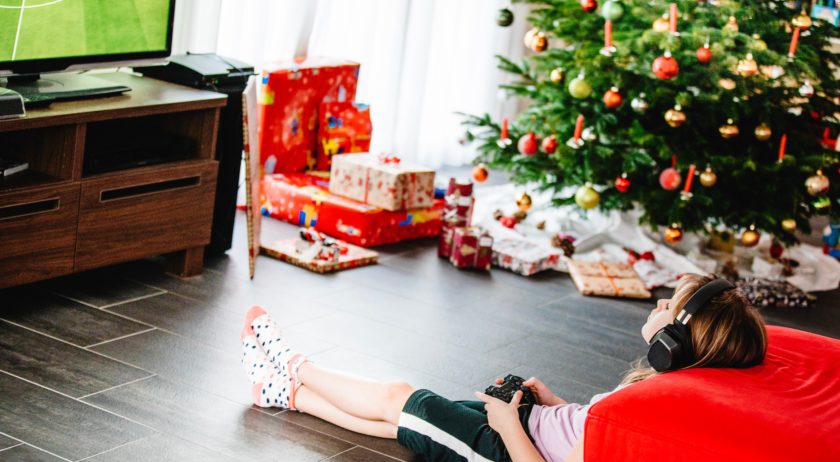The holidays can provide a special sense of wonder and excitement, but they can also make you feel like there is some special trick to finding a balance between letting your kids have fun and wishing your tired, touchy, tantrum throwers were back in school already. The digital entertainment and devices most kids will unwrap this season can, unfortunately, exacerbate overstimulation and inattention, particularly when kids have ADHD or other attentional issues. We all know what happens when kids get their hands on a new console or video game — they plug in and tune out, and it can be a tiresome struggle to get them to tune back in again.
Many, many kids will be getting tech toys and video games this holiday season, and they’ll rightfully want a chance to play with them. Screen time limits during winter break should definitely be relaxed, but how much is too much? How do you keep them present when tech presents seem to encourage the opposite? In this special holiday post, we provide some tips for setting screen time limits during winter break. We suggest talking to your kids about these ground rules before Christmas vacation even starts so that limit-setting goes more smoothly.
Family Matters The holidays are a time for family. Relatives often drive or fly in just for seasonal celebrations. But even if there aren’t any big holiday plans, you may feel that it’s important that the time spent together on particular days of the year is quality time, and that your children know that sometimes disappearing into a game or social media just isn’t appropriate. Consider coming to an agreement ahead of time about when it’s okay to turn on devices — perhaps a couple of hours before lunch or after dinner. If they help determine the rules and have a clear understanding of boundaries, it’s easier to stick to them.
Play Together It’s only natural for kids to want to play with toys after they open them — today’s toys just happen to be electronic devices and video games. If you’re a family that already plays games together, there’s no better opportunity for bonding than this. And if you haven’t played video games with your kids before, what better time to start? If you plan on enjoying a larger family gathering with extended family, games like Nintendo Switch Sports or Let’s Dance can be worth hours of entertainment and get everyone moving and laughing. Your memory-making might not look like a Norman Rockwell painting, but it’s still memory-making — and you’ll be opening a dialogue about video games that will serve you and your children far into the future.
Go Dark at Dinner Sometimes children aren’t the only tech offenders when it comes to turning off the devices and tuning into the rest of the family. Consider making a blanket rule for the whole family that no one brings their devices to the table (you could even try not even talking about technology.) Parents modeling this kind of behavior doesn’t just encourage a sense of togetherness, it can also be helpful for enforcing other limit-setting rules around the holidays.
A Midnight Clear You might find that after kids open presents, you want to relax limits and just let them have fun, and sometimes this can last well into the night. It’s standard limit-setting practice to let kids wind down before bed, and while you might make an exception for a night, there’s good reason not to change this over the rest of winter break. Most experts recommend that the half-hour before bed be spent doing something other than reading online or playing video games because it helps the brain relax. This rule is especially important for kids with ADHD who might have trouble getting to sleep or staying asleep. Sticking to this might be beneficial, not only because it will help enforce other limit-setting rules but also because it will make it easier to return to the regular schedule after the holidays.
And finally, the most important limit-setting rule (as always) is: Don’t be too hard on them, or on yourself, if screen time limits during winter break are difficult to stick to.




